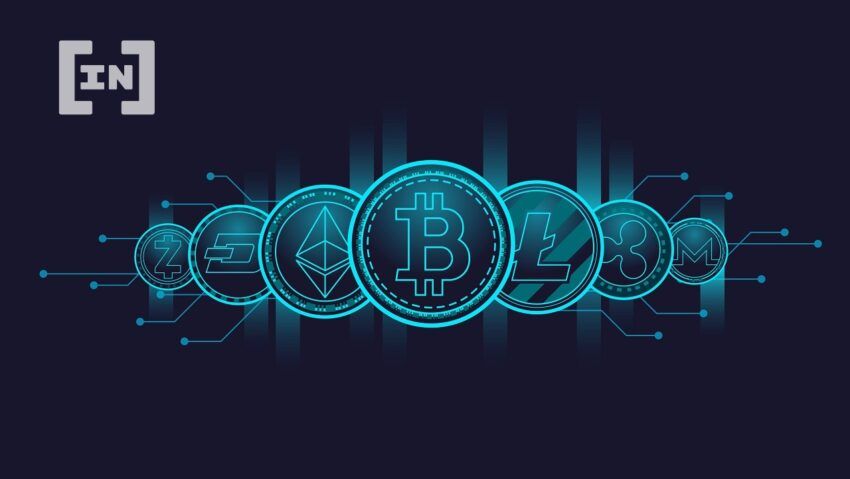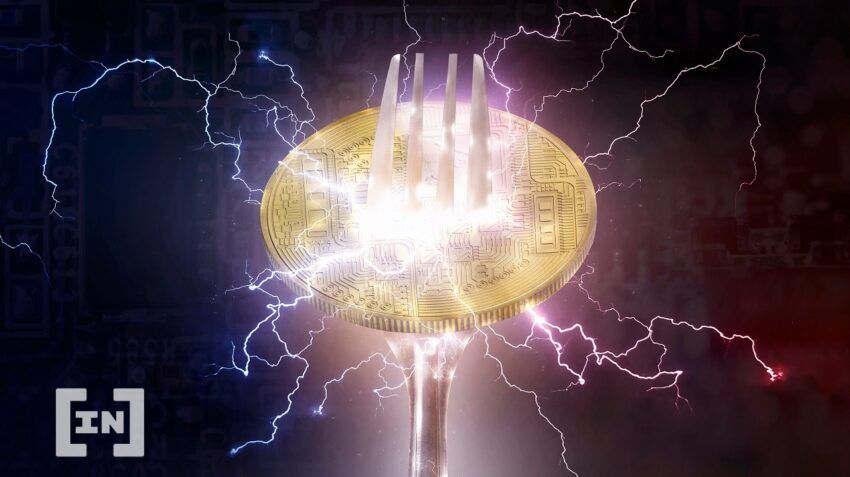Create your own cryptocurrency on your own exchange: Open-source exchange software makes starting a coin easier, says Adrian Pollard, Co-Founder of HollaEx.
People new to crypto and even experts alike have a common gripe when it comes to starting a new coin or token. Both camps tend to dislike the nature of starting a coin. It’s not straightforward, it’s not transparent and it is difficult to manage the start-up of a coin. Rookies find it difficult to understand how to price their coin, let alone share them. Experts do too. Challenges discourage people from even trying.
Starting a new coin or token: The breakdown
For the uninitiated, when we talk about tokens and coins it is important to note that they are used interchangeably. The difference for a token though is that they generally use existing blockchains like Ethereum or even Bitcoin’s blockchain. But the vast majority are using the ERC-20 token standard, because it increases usability and the chance of adoption.
Technically the term ‘coin’ would use its own blockchain. This is what Dogecoin did by forking Bitcoin. Dogecoin is essentially a Bitcoin clone with minor change made along the way.
For the sake of this article, we will use coin and token interchangeably.
Typically coin and token creators will change the easily configurable settings. This is things like the supply or the number of coins, the name of coin and the symbol (think BTC, DOGE, etc). This is all easy stuff to set up, but one thing that isn’t easy to set up is the price. The price of a coin requires much more work.
Even if you create your own coin with the perfect purpose there still won’t be a price. This is where all new coin or token creators hit a wall.
Create your own cryptocurrency: Price
Where do prices come from? You could set a static price but that is no good for stuff that is new and unknown. Simply put, you have to put your coin into a ‘supply and demand’ scenario and let other people decide what the price is. What this really means is that people, a lot of people, need to start buying and selling the coin over a long period of time. There is no better place for this to happen than on an exchange.
This is why popular exchanges like Uniswap are so large. They allow coin creators to make markets in the hopes of pricing their coin. These platforms are great if your coin is already well known. But they aren’t great if you are just getting started. The reality is they are expensive to use for coin price discovery.
Why? First, the fees to buy and sell on these platforms are high because they require a blockchain transaction or on-chain transaction. This means you could pay around $5 (if you are lucky) or even $50 per trade. This is why centralized exchanges remain much more popular.
Not only that, but centralized exchanges are better for new coins because they have a transparent orderbook that is easier on the price discovery process. Cheaper and faster than using a decentralized exchange, it is easy to see why a new coin creator will want to list on these centralized platforms.
Create your own cryptocurrency: Communication
Then there’s the other fly in the ointment. Something that rarely is talked about, but every good business owner knows, is an issue. You can’t communicate the idea of the coin easily on these decentralized exchanges. If you can’t share your idea, then people aren’t ever going to buy the idea of the coin no matter what the price. You may not even be able to give it away your coin for free!
Many coin creators actually go to great lengths to list their coin on the popular large, centralized exchanges in the hopes of getting their coin’s logo and brand out there to the public. But most can’t afford to do so, and compromise by listing only on a decentralized exchange (DEX).
A lot fees will be spent on this endeavor – by both the coin creator and the users. Every day, countless coins are added to DEXs. But none of these DEXs have a way to show the coin information. Not even a logo is easily added!
Frankly, coins without a clear brand or home are doomed to fail.
If a coin is not on a proper exchange, with a clear orderbook, clear historical price chart, login/signup page, wallet system for easy, free deposit/withdrawals, and clear logos and icons, then everything else will be a guaranteed wasted endeavor.
Who is going to buy your token or coin if they can’t even see the logo or even the most basic semblance of information on it?
An exchange platform is the lifeblood of any new coin and token because it communicates the token’s intent and purposes. This leads to real price discovery.
Create your own cryptocurrency: Cost of starting a coin
Starting a coin is typically expensive all things considered. As outlined in this article it can cost about $400 (often more) and depends on the traffic on Ethereum. After the initial coin creation process, you will probably decide to list on a DEX which will require yet again multiple on-chain payments for registering the coin on the DEX. There is also the matter of providing liquidity which is another topic altogether. But suffice to say, you are going to need more than $400.
A safer way to start a coin is to simply have it listed on a big centralized exchange like Binance, but you’d be looking at $100,000s of dollars – if you lucky. Large platforms won’t just list anything, even if you have money.
All these unnecessary complications and never-ending start-up costs are off-putting to businesses and startups alike. As a result, this puts many people on the fence about starting their own cryptocurrency. It is truly a frustrating experience even for the most advanced crypto-savvy startups and businesses.
Every coin creator needs their own special, dedicated marketplace for their coin. Having your own digital marketplace allows for the careful management of new coin creation, pricing, supply issuance, and of course communication. Running a market or exchange is just like having your own mini economic system with centralized information for your users.
An exchange is the logical place to start for coin creators, an exchange can more easily manage the coin set up, market and pricing.
An exchange software kit, which provides all the tools for coin supply and distribution directly to users’ accounts is the main thing that coin creators need at the beginning of their journey. The platform can manage each user’s coin balance. And, it can automatically manage the deposits and withdrawals of not only your own new coin but also other coins like Bitcoin and Ethereum. Of course, since everything is centralized on your own computer, the fees you’d normally pay to the blockchain aren’t required anymore. This reduces startup costs.
To add, with a little tech knowledge, using a free open-source exchange software solution to further reduce cost is a smart choice.

Centralized tech mixed with DeFi
Exchange software tools lift the burden on coin creators and crypto projects alike. An exchange works like a home base for the coin: it includes the wallet, price charts, and all mechanisms to buy and sell the coin. Anyone can start their coin with the exchange software for free. Stand-alone coin creation software, on the other hand, will only do 5% of the job of starting a new coin.
An option is to start a coin with a white-label solution. This is a fancy way of saying a ready-made solution. It means the difficult stages of a coin’s life cycle can be more easily managed because it provides greater control and optionality.
For example, instead of launching the token on the blockchain as a first step, users can simply create the token within the exchange software itself first internally. This means no blockchain fees and less complications in the coin-creation process. Having an exchange platform will also allow for pre-marketing, communication, and pre-trading of other coins like BTC or ETH. It also means that anyone with a userbase can offer the typical crypto exchange services.
This process is a much safer and more intuitive way to operate a crypto project and business because it requires less third-party coordination. Instead, everything is handled by a single operator in their own web browser.
Customizability is also much easier using an exchange software kit like HollaEx because it allows for changes to be made on the fly without the request of a programmer. This means getting your coin and exchange listed on popular websites like CoinMarketCap and CoinGecko will be easier. Simply adjust what is needed on your exchange according to the requirements of these coin-listing websites. Customizability is something not possible if you have your coin listed on third-party exchanges because you don’t control the platform.
By running your own exchange, you not only bypass costly blockchain set up fees, but you’ve also simplified your token, branding, and whole crypto businesses management process. The tokenomic system will be much more straightforward to craft while the token or coin project grows.
Create and price your coin with exchange software
Lastly, creating your coin on your own exchange that you control, will mean that many more business avenues will arise. For example, once your coin is priced you can begin rewards systems for use of your exchange. You can even have other tokens represent other goods and services. Your customer base can buy into these to get earlier dibs on the token’s offering. But ultimately there is no better way to price your coin than to have your own exchange.

Create your own cryptocurrency: How to start
The best place to start is to research white-label crypto exchange tool kits and try them out yourself. Free options that are open to use, are always better. They have been vetted and are in use in the public domain and go by the crypto open protocol ethos. Good luck and happy coin creation!
Got something to say about how to create your own cryptocurrency or anything else? Write to us or join the discussion in our Telegram channel.
Disclaimer
All the information contained on our website is published in good faith and for general information purposes only. Any action the reader takes upon the information found on our website is strictly at their own risk.


